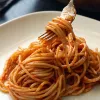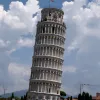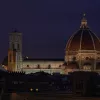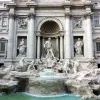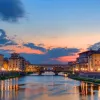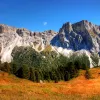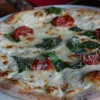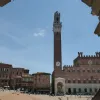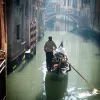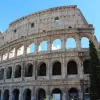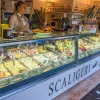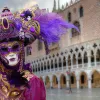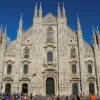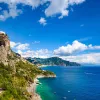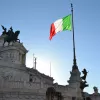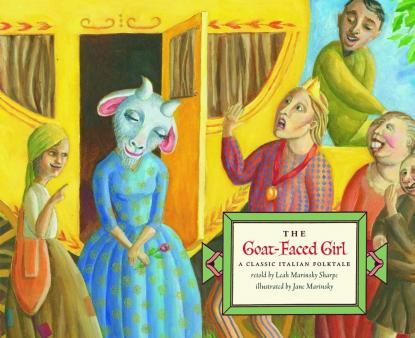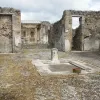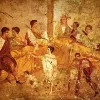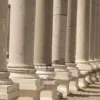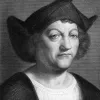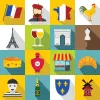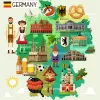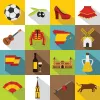Important update from TheSchoolRun
For the past 13 years, TheSchoolRun has been run by a small team of mums working from home, dedicated to providing quality educational resources to primary school parents. Unfortunately, rising supplier costs and falling revenue have made it impossible for us to continue operating, and we’ve had to make the difficult decision to close. The good news: We’ve arranged for another educational provider to take over many of our resources. These will be hosted on a new portal, where the content will be updated and expanded to support your child’s learning.
What this means for subscribers:
- Your subscription is still active, and for now, you can keep using the website as normal — just log in with your usual details to access all our articles and resources*.
- In a few months, all resources will move to the new portal. You’ll continue to have access there until your subscription ends. We’ll send you full details nearer the time.
- As a thank you for your support, we’ll also be sending you 16 primary school eBooks (worth £108.84) to download and keep.
A few changes to be aware of:
- The Learning Journey weekly email has ended, but your child’s plan will still be updated on your dashboard each Monday. Just log in to see the recommended worksheets.
- The 11+ weekly emails have now ended. We sent you all the remaining emails in the series at the end of March — please check your inbox (and spam folder) if you haven’t seen them. You can also follow the full programme here: 11+ Learning Journey.
If you have any questions, please contact us at enquiries@theschoolrun.com. Thank you for being part of our journey it’s been a privilege to support your family’s learning.
*If you need to reset your password, it will still work as usual. Please check your spam folder if the reset email doesn’t appear in your inbox.
Italy
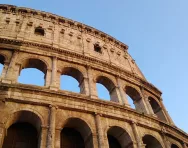
Italy, often referred to as 'lo Stivale' or 'the Boot' because of its high-heeled boot-like shape, is the 11th largest country in continental Europe. People who live in Italy are called Italians and they speak Italian.
The weather in Italy is variable, with cold winters and snow in the north and very hot summers in the south. Italy is a popular tourist destination with both skiiers and beach-goers!
Famous Italians invented lots of things and foods that we still use and eat today, such as the thermometer and pizza, and many world-famous artists and musicians were Italian. Today Italy is a world leader in product design and fashion.
Italy is also famous for being the home of the Roman empire.
Top 10 facts
- The capital city of Italy is Rome. Rome was home to the Ancient Romans, whose civilisation grew into a huge empire.
- The official language in Italy is Italian. The currency is the euro.
- Italy is in the continent of Europe and is bordered by Austria, France and Switzerland.
- Over 60 million people live in Italy, which is a democratic republic.
- Italy is home to amazing works of art and architecture which are admired all over the world.
- The longest river in Italy is the river Po and over 75% of the country is mountainous terrain.
- Pizza – possibly Italy’s most famous food – was created in the Italian city of Naples around the 1860s.
- The thermometer is an Italian invention. Galileo Galilei invented a water thermoscope in 1593, while in 1612, Italian inventor Santorio Santorio was the first to put a numerical scale on his thermoscope.
- Italy is home to the microstate Vatican City where the Pope, the head of the Roman Catholic Church, resides.
- Italy also has the most volcanoes in Europe and Mount Vesuvius (near Naples) and Mount Etna (in Sicily) are still active.
Timeline
- 800-600BCGreeks, Etruscans and others settle in Italy.
- 753BCRome is founded by Romulus (according to legends).
- 509BCThe monarchy is overthrown and Rome becomes a republic ruled by senators.
- 45BCJulius Caesar becomes the first dictator of Rome, ending the Roman Republic.
- 44BCJulius Caesar is killed during the Ides of March by Marcus Brutus. Civil war breaks out.
- 27BCAugustus Caesar becomes the first emperor of Rome and the Roman Empire begins.
- 64ADEmperor Nero sets fire to Rome.
- 80The Colosseum is built and is celebrated with 100 days of games.
- 306Constantine becomes emperor of Rome and it becomes a Christian empire. Before this Rome had persecuted the Christians.
- 380Theodosius I proclaims Christianity as the sole religion of the Roman Empire.
- 395The Roman empire is split into two by Theodosius: the Western and Eastern Roman Empires.
- 476The last Roman emperor Romulus Augustus is defeated by the German Goth Odoacer. This is the start of the dark ages in Europe.
- 1200-1600Rome, Florence and Venice prosper during the Renaissance.
- 1861Italy becomes one nation under King Victor Emmanuel II. He reigns until 1878.
- 1878King Humbert I becomes king. He reigns until 1900.
- 1900King Victor Emmanuel III becomes king. He abdicates in 1946.
- 1915Italy enters World War I on the side of the allies.
- 1940-1943Italy sides with Germany and enters World War II. In 1943, dictator Benito Mussolini is forced to resign.
- 1946King Humbert II becomes king on 9 May 1946 but the Italians vote to end the monarchy and make their nation a democratic republic. He is disposed on 18 June 1946.
- 1984Catholicism is no longer Italy’s formal state religion.
- 2014Matteo Renzi, at 39, is the youngest Prime Minister in Italy’s history.

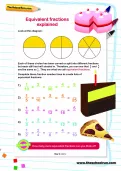
Boost Your Child's Learning Today!
- Start your child on a tailored learning programme
- Get weekly English & maths resources sent direct to your inbox
- Keep your child's learning on track
Did you know?
- Italy was the birthplace of the Renaissance, a period of great cultural achievements in poetry, painting and architecture that lasted from the 14th to the 17th centuries. Famous artists such as Michelangelo, Raphael, Donatello and Leonardo Da Vinci lived during the Renaissance.
- The most popular sport in Italy is football. Italy has won four World Cups; famous Italian football players include Fabio Cannavaro, Paolo Rossi, Giacinto Facchetti, Gianluigi Buffon and Luigi Riva.
- Ferrari, Lamborghini, Alfa Romeo and Maserati are well known Italian car manufacturers.
- Many famous scientists and mathematicians were born and raised in Italy: Leonardo Da Vinci, Galileo Galilei, Alessandro Volta and Leonardo Fibonacci to name just a few.
- Italy is also famous for its art with many of its artists leading artistic movements. Famous artists include Michelangelo, Raphael, Botticelli and Caravaggio.
- The famous leaning Tower of Pisa began to tilt during its construction. Built as a cathedral for the town of Pisa, it stands 55.86 metres from the ground on its low side and 56.67 metres on its high side.
- Italy has suffered many earthquakes and volcanic eruptions due to its position between the Eurasian and the African tectonic plates. The volcanoes of Mount Etna (the tallest and most active volcano in Europe) and Vesuvius are a constant danger to humans due to their closeness to big cities. The most famous volcanic eruption was Mount Vesuvius in 79AD when the city of Pompeii was destroyed.
- Vatican City is a microstate nestled inside the city of Rome and surrounded by a stone wall. It is the home of the Pope, who is the head of the Roman Catholic Church. Within Vatican City there is a large church called Saint Peter's Basilica, the Vatican Palace, and other buildings. The Vatican Palace contains the Pope's apartments, museums, a library, and the Sistine Chapel. The Sistine Chapel is famous for its ceiling, which depicts scenes from the Bible were painted by the artist Michelangelo.
- San Marino, also known as the Most Serene Republic of San Marino, is another microstate within Italy, situated on the Italian Peninsula on the north-eastern side of the Apennine Mountains. It operates independently to Italy and even has its own football team.
- Two adjacent islands in the Mediterranean Sea, Sardinia and Sicily, are also part of Italy.
- The oldest university in Europe is in the Italian city of Bologna. Bologna University was founded a thousand years ago!
- Christopher Columbus and Marco Polo were famous Italian explorers.
Look through the gallery below and see if you can spot the following:
- Spaghetti
- The Leaning Tower of Pisa
- The Duomo cathedral in Florence
- The Trevi Fountain in Rome
- Ponte Vecchio in Florence
- The Dolomites
- Pizza
- The medieval city of Siena
- A gondola in Venice
- The Colosseum in Rome
- Italian ice cream, gelato
- Carnival masks in Venice
- The Duomo cathedral in Maln
- The Amalfi coast
- The Italian flag
Gallery
About
Located in Southern Europe, Italy is separated from the European countries of France, Switzerland, Austria and Slovenia by the Alps.
The highest mountain in the Alps is the Monte Bianco, the "white mountain", which is 4,807m high and lies along the French-Italian border and reaches into Switzerland. There are many long and deep lakes in the North of Italy, and the Po is Italy’s longest river at 652km.
The Apennines are another big mountain range which go all along the boot part of Italy and separate the East and the West of the country.
In the South of Italy you will find Italy’s three active volcanoes: Vesuvius near Naples, Etna on Sicily and Stromboli off the Coast of Italy. In 79AD, Vesuvius erupted covering the ancient town of Pompeii in volcanic ash, preserving many buildings and people that can still be seen today.
Italy also surrounds two of the world’s smallest countries, also known as microstates. These are San Marino in Northern Italy, the oldest republic in the world and Vatican City in Rome, the smallest country in the world.
Vatican City is led by the Pope and is the headquarters of the Roman Catholic Church. It operates independently and even has its own army to protect the Pope. The Swiss Guard was formed in 1506 and still is comprised entirely of people from Switzerland. Italy is largely a Christian country and many of its celebrations are based on significant dates in the Roman Catholic calendar, such as Ferragosto on 15 August, which celebrates the ascent of Mary to join Jesus in heaven.
Italy has had an interesting history with the Ancient Romans being some of its most famous occupants. It has been ruled as an empire, by monarchy and as a republic during its history.
Italians are famous for their inventions and discoveries. The Italian explorers Christopher Columbus and Amerigo Vespucci travelled to the Americas while Marco Polo explored the East.
Leonardo da Vinci was a scientist and artist who was the first to prove the world is round and not flat and Alessandro Volta studied electricity, hence the name “volt” to measure a unit of electricity.
Italians speak Italian, which is a Romance language descended from spoken Latin between the sixth and ninth centuries. Its alphabet contains 21 letters (5 vowels and 16 consonants), which excludes the letters J, K, W, X and Y which we use in the English language.
Italy’s flag represents three virtues: hope (green), faith (white), and charity (red).
Pizza is surely one of the most famous Italian culinary exports and in Italy it is usually baked in a wood-fired oven and very thin, loaded with fresh vegetables or thinly sliced ham, salami, artichokes or olives. Italian pasta is renowned worldwide and there are more than 200 different shapes. Other famous foods include risotto (rice) and sweet cakes like panettone (a yeast cake with raisins, eaten at Christmas), Panforte (a hard and flat fruit cake) and almond pastries like amaretti.
Words to know:
Renaissance – the great revival of art, literature and learning during the 14th to 17th century
Cathedral – the main church, which contains the bishop’s throne
Tectonic plates – the different layers that make up the surface of the earth
Microstate – a small country
Peninsula – an area of land almost surrounded by water except for a small strip connected to the mainland
Empire – a group of people or nations ruled by an emperor
Monarchy – a state or nation ruled by a king or queen
Republic – a state or nation ruled by votes from the public
Latin – the language spoken in ancient Rome
Related Videos
Just for fun...
- Create your own Pizza game to cut out and play
- Download some Italy-themed printables
- Lots of Italian colouring-in pages
- Make your own paper models of famous Italian buildings like the Leaning Tower of Pisa, the Colosseum in Rome, the Duomo in Milan and the Duomo in Florence
- Learn to sing some Italian songs
- Find out about traditional games Italian children play
- See Italy from space!
- Be inspired by the work of Italian artist Canaletto and make your own Punchillo mask for a Venetian carnival celebration
- Make some chiacchiere, Italian fried dough sweet treats made before the beginning of Lent
Children's books about Italy
Find out more
- National Geographic Kids facts about Italy
- Read lots of fun facts about life in Italy
- Hear the Italian alphabet, then learn some useful phrases
- See pictures of Italian cities, art and culture
- Find out more about Venice with a Fun Kids radio guide
- What Italian food have you tasted?
- BBC Bitesize a video about birthday celebrations in Italy
- Find out about Italian Christmas traditions
- Kids' information about Easter in Italy
- See kids' annotated guides to the Colosseum and the Leaning Tower of Pisa
See for yourself
- Explore the city of Venice from your computer using Google Streetview
- Rome and ancient ruins
- The Stadio Olimpico is a famous football stadium
- See some beautiful National Geographic photographs of Italy
- Visiting Pompeii
- Plan a visit to Vatican City
